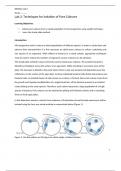Bios 242 week 1 lab - Study guides, Class notes & Summaries
Looking for the best study guides, study notes and summaries about Bios 242 week 1 lab? On this page you'll find 138 study documents about Bios 242 week 1 lab.
Page 2 out of 138 results
Sort by
BIOS-242: | BIOS 242 FUNDAMENTALS OF MICROBIOLOGY WITH LAB WEEK 1 REVIEW QUESTIONS WITH ANSWERS
BIOS-242: | BIOS 242 FUNDAMENTALS OF MICROBIOLOGY WITH LAB WEEK 1 QUESTIONS WITH ANSWERS
BIOS 242 FUNDAMENTALS OF MICROBIOLOGY WITH LAB WEEK 1 REVIEW QUESTIONS WITH ANSWERS
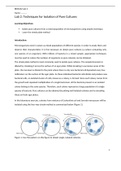
-
BIOS 242 Week 1 Lab 2; Isolation of Pure Cultures
- Other • 9 pages • 2023
- Available in package deal
-
- $16.49
- + learn more
BIOS 242 Week 1 Lab 2; Isolation of Pure Cultures
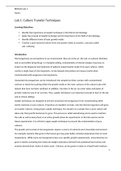
-
BIOS 242 Week 1 Lab 1; Culture Transfer Techniques
- Other • 9 pages • 2023
- Available in package deal
-
- $16.49
- + learn more
LearningObjectives: • Identifytheimportanceofaseptictechniqueinthefieldofmicrobiology • Applytheconceptofaseptictechniqueanditsimportanceinthefieldofmicrobiology. • Identifydifferentformsofbasicgrowthmedia • Transferapurebacterialculturefromonegrowthmediatoanother,aprocesscalledsub-culturing.
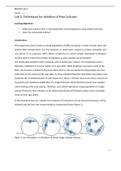
-
BIOS 242 Week 1 Lab 2; Isolation of Pure Cultures
- Other • 9 pages • 2023
- Available in package deal
-
- $22.49
- + learn more
Lab2:TechniquesforIsolationofPureCultures LearningObjectives: • Isolatepureculturesfromamixedpopulationofmicroorganismsusingaseptictechnique. • Learnthestreakplatemethod Introduction: Inthislaboratoryexercise,coloniesfrommixturesofEscherichiacoliandSerratiamarcescenswillbeisolatedusingthefour-waystreakmethodassummarizedbelow(Figure1). We will need this image from Materials: A24hournutrientbrothmixtureofSerratiamarsecens(S.marsecens)andEscherichiacoli(E.coli),twonutrientagarpl...
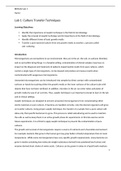
-
BIOS 242 Week 1 Lab 1; Culture Transfer Techniques
- Other • 9 pages • 2023
- Available in package deal
-
- $21.48
- + learn more
Lab1:CultureTransferTechniques LearningObjectives: • Identifytheimportanceofaseptictechniqueinthefieldofmicrobiology • Applytheconceptofaseptictechniqueanditsimportanceinthefieldofmicrobiology. • Identifydifferentformsofbasicgrowthmedia • Transferapurebacterialculturefromonegrowthmediatoanother,aprocesscalledsub-culturing. Introduction: Materials: Nutrientbroth,Nutrientagarslants,Nutrientagarstabs,liquidandslantculturesofSerratiamarcescens, inoculatingloop,inoculatingneedle,in...
BIOS 242 Week 1 Lab 2; Isolation of Pure Cultures
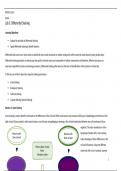
-
BIOS 242 Week 3 Assignment; Lab 5 of 14 Onsite; Differential Staining
- Other • 18 pages • 2024
-
- $9.99
- + learn more
BIOS 242 Week 3 Assignment; Lab 5 of 14 Onsite; Differential Staining Learning Objectives: Explain the principle of differential staining Apply differential staining to identify bacteria Differential stain uses two or more stains to specifically stain certain structures or cellular components which cannot be easily observed using simple stains. Differential staining principles are based upon the specific chemical nature and composition of cellular components and therefore, different s...
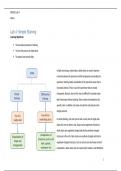
-
BIOS 242 Week 2 Assignment; Lab 4 of 14 Onsite; Simple Staining
- Other • 15 pages • 2024
-
- $9.99
- + learn more
BIOS 242 Week 2 Assignment; Lab 4 of 14 Onsite; Simple Staining Lab 4: Simple Staining Learning Objectives: To learn about principle of staining To learn the process of simple stain To prepare wet mount slides In light microscopy, colored dyes, called stains are used to improve contrast between the specimen and the background surrounding the specimen. Staining makes visualization of the specimen easier due to increased contrast. This is crucial for specimens that are mostl...

How did he do that? By selling his study resources on Stuvia. Try it yourself! Discover all about earning on Stuvia






